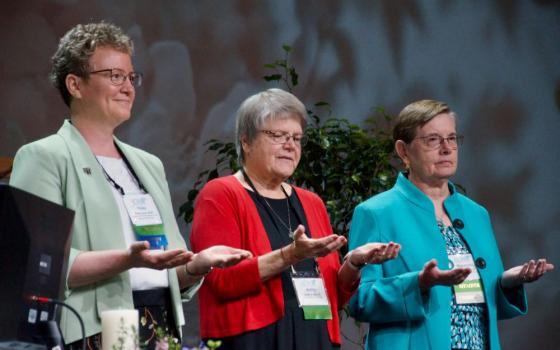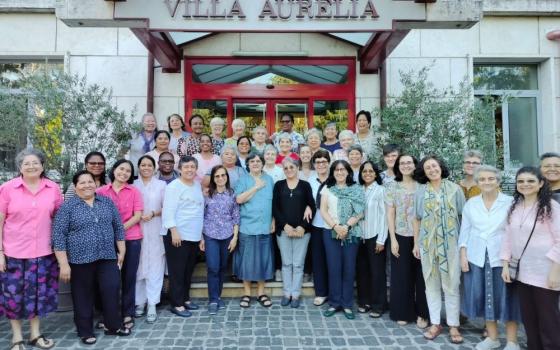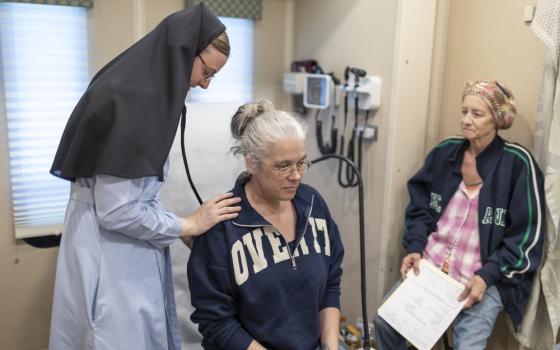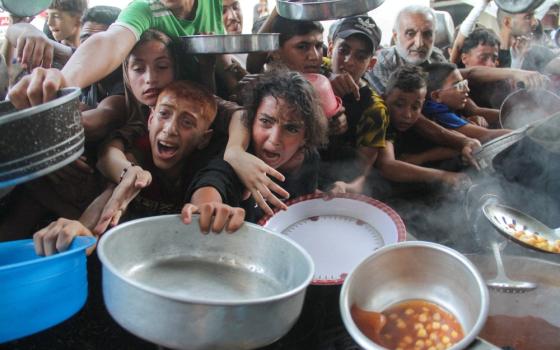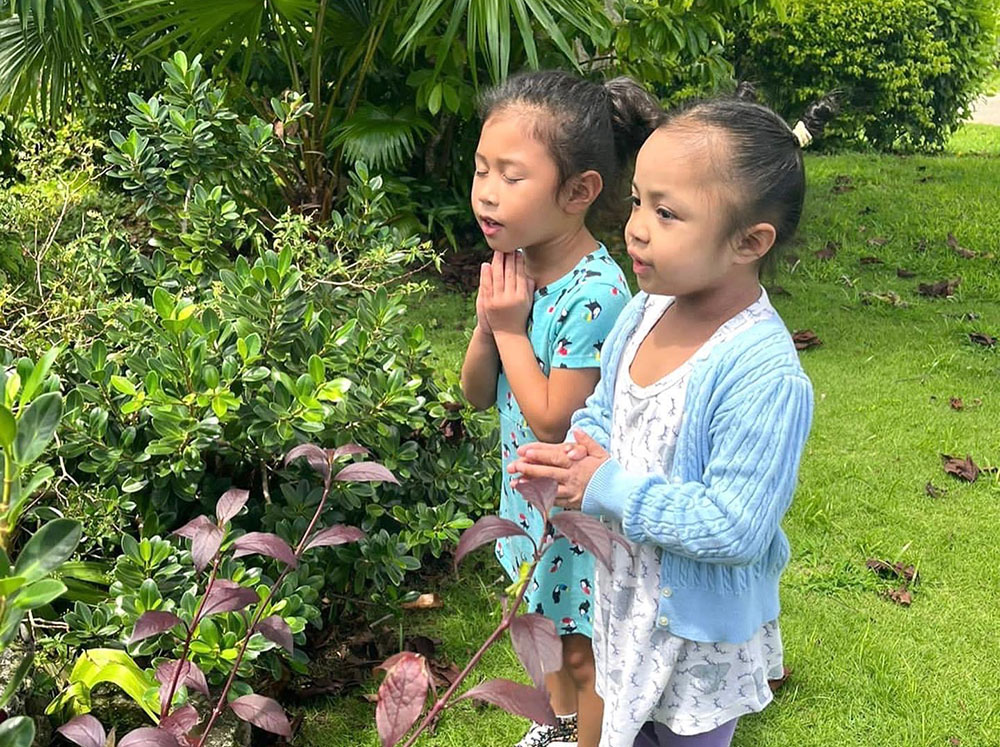
As part of their service activities to mark the five-year anniversary of Mercy Education, children at Infant of Prague Catholic Nursery and Kindergarten in Mangilao, Guam, pray for different intentions. (Courtesy of Mercy Education)
In 2015, the six remaining Sisters of Mercy congregations were well on their way to merging into one, and it was becoming obvious that the structure of the sisters' 55 schools in six countries needed to change, as well.
Thus began a two-year process that led to the 2017 creation of Mercy Education, a new entity that would enable the schools to better collaborate and allow the sisters to ensure that the Mercy charism and character remain at the heart of every school.
"It was coming out of: How can we best support our schools moving into the future?" said Mercy Sr. Lisa Griffith, executive director of Mercy Education. "How can we ensure, if we're going to sponsor schools, that we have the structures in place to support those ministries?"
In 2019, the six congregations were canonically absorbed into the Sisters of Mercy of the Americas. Griffith said the schools had been getting together to network and collaborate for two or three decades, and the secondary schools had been gathering for an annual conference for even longer. So putting all 55 schools under one umbrella in some ways was not a big change.
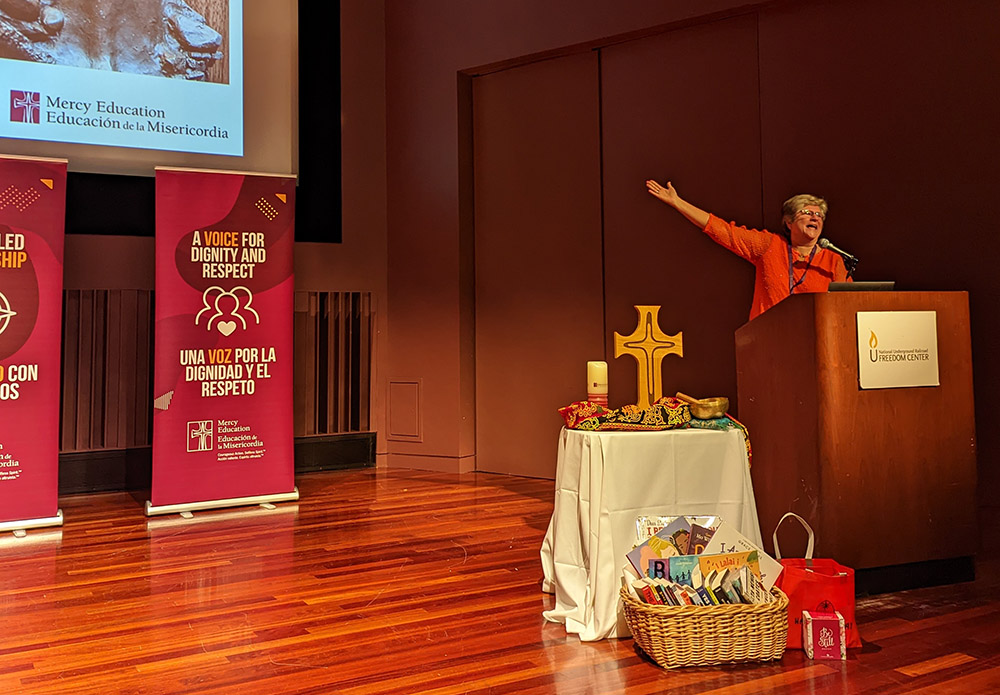
Mercy Sr. Lisa Griffith, executive director of Mercy Education, speaks at the annual Mercy Education Conference in October. (Courtesy of Mercy Education)
But there were questions about whether a national or global office would be familiar with the intricacies of local situations. Previously, the schools were sponsored by one of the six regional congregations, so there were longstanding relationships and resources close by.
"The question was, 'How will you get to know us, and if we need help, who do we call?' " Griffith said.
The immediate answer was to create an orientation process for any new leaders in the schools, plus a road trip by Mercy Education staff in the 2017-18 school year to meet and get to know those new leaders in person. That process went so well and seemed so important that they decided to visit each and every school: All 35 schools in the United States were visited that first year, and the schools in Guam, Jamaica, Honduras, Belize and the Philippines soon after.
Building relationships with the local entities was crucial. While Mercy Education's staff of eight includes three Sisters of Mercy and four Mercy associates, for many years, the schools themselves have operated with few or no sisters as teachers or administrators.
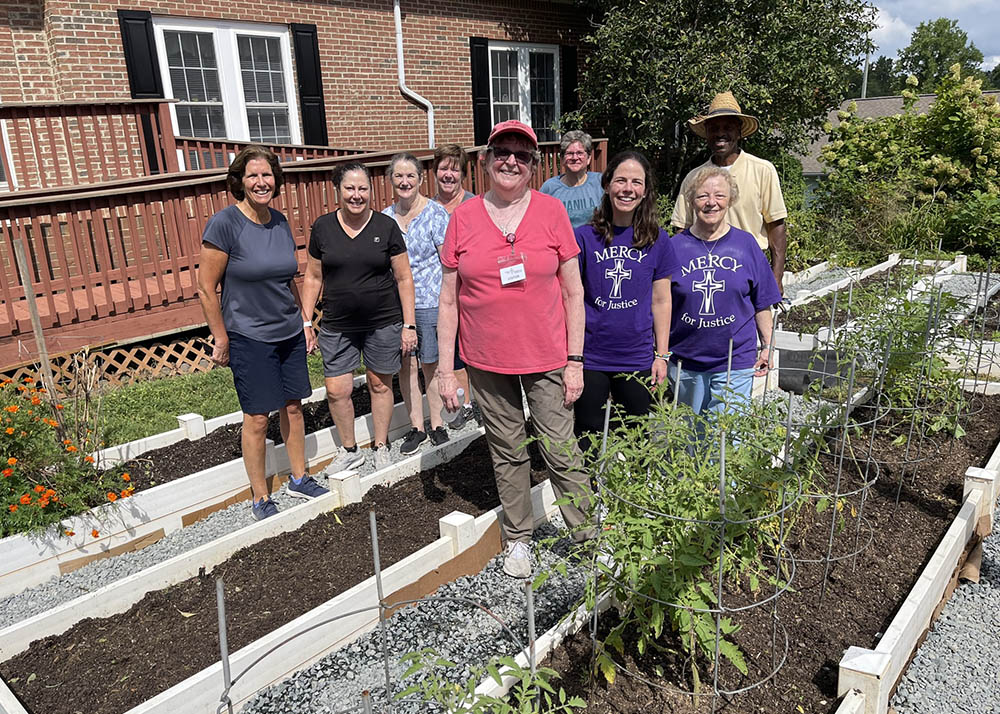
Mercy Education staff participate in a morning of service supporting the horticultural therapy program at Holy Angels Belmont, North Carolina, a Mercy ministry that serves people with disabilities. (Courtesy of Mercy Education)
"The school boards, the administrators, the staff got to see us face to face and hear us say, 'Hello, we're here to help you, we're here to support you,' " Griffith said. "They saw our commitment to being supportive."
The relationship-building also helped make clear that the new configuration was not about control, though one factor in creating Mercy Education was a single accountability structure rather than the 55 different models that had been in place.
"Obviously, the schools were operating well, but [accountability] was different across the board," Griffith said.
She said they work hard to send the message to board members and administrators that the new structure is about resources and support.
"I tell them, 'You are the boots on the ground. You are closest to the issue. Help us understand,' " Griffith said. "I have not heard, 'You're just trying to tell us what to do.' "
Advertisement
Mercy Sr. Delores Hannon, president of Mercy High School in Omaha, Nebraska, said because there are five sister-run schools* in Omaha, there was already a lot of collaboration, but Mercy Education allows them to partner with schools around the world.
"There's a shared knowledge," Hannon said. "Sometimes we learn from each other's successes, and sometimes from 'Gosh, I wish I hadn't done that.' But it is helpful to be able to say, 'Here's how our experience went.' "
The COVID-19 pandemic brought forced lockdowns and changes that tested the system, and the new opportunities for collaboration paid off.
"Every school, whether in the United States or another country, was dealing with the same issues at the same time, so we were all working together on how we can best serve our students and staff," Griffith said. "At one point, an administrator said, 'This is why we became a system.' "
To mark the five-year anniversary of Mercy Education, school officials set a goal for its staff and students to collectively accrue five years' worth of service hours — 43,800 hours — over two weeks in September.

As part of their service to mark the five-year anniversary of Mercy Education, students at Mercy High School in Omaha, Nebraska, did a variety of projects, including helping at food pantries, their parishes and their school. (Courtesy of Mercy Education)
The schools responded and exceeded the goal, giving more than 45,000 hours.
Griffith said parents of students in Mercy schools would not have seen a difference in structure or staff but should have seen much more education about who the Sisters of Mercy are and the five core values Mercy Education has adopted: Compelled By Mercy; Educational Courage; Inspired By Faith; Principled Leadership; and a Voice for Dignity and Respect.
Hannon said the Mercy Education structure will become even more valuable as the pandemic restrictions fade and there is more opportunity for face-to-face contact across school, regional and even international lines.
"That is just a really big part of it," Hannon said. "It's such a valuable experience."
*An earlier version of this story gave an incorrect number of schools.

